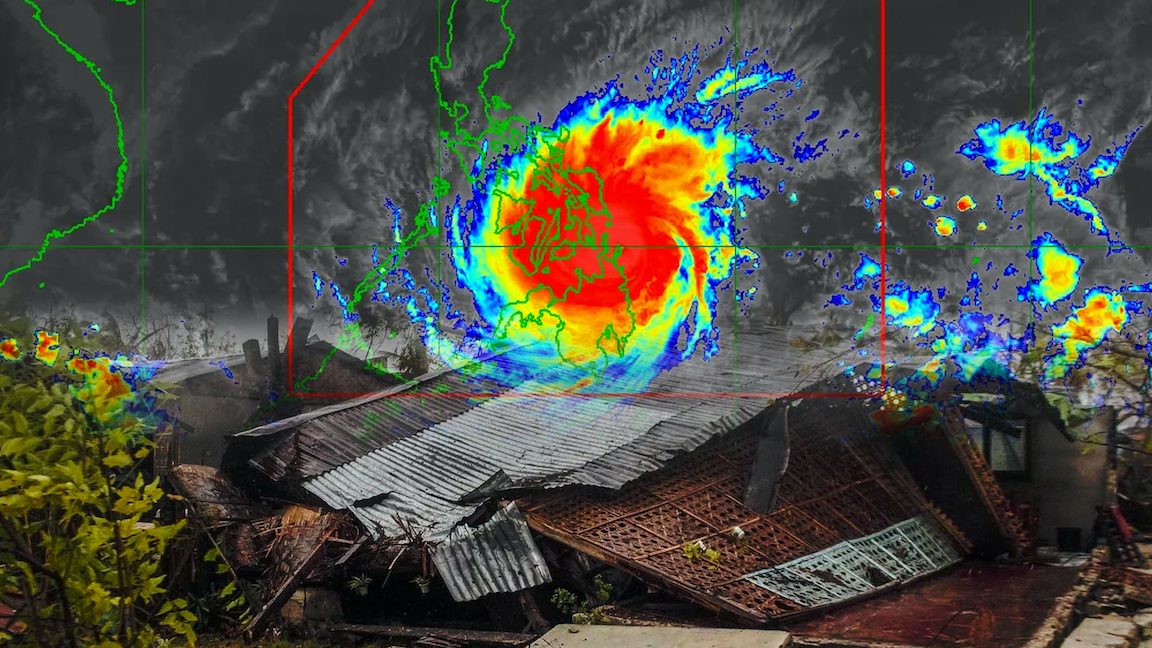SUMMARY
This is AI generated summarization, which may have errors. For context, always refer to the full article.

MANILA, Philippines – The Philippines’ weather bureau revised its definition of a super typhoon, as well as meanings of tropical cyclone wind signals, marking a shift in local forecasting.
A super typhoon was originally classified as having maximum sustained winds exceeding 220 kilometers per hour (km/h).
Under the new classification of the Philippine Atmospheric, Geophysical, and Astronomical Services Administration (PAGASA) announced on Wednesday, March 23, a tropical cyclone with maximum sustained winds of 185 km/h or above will now be classified as a super typhoon.
Subsequently, the definition of a typhoon was also revised. From the original range of 118 to 220 km/h, a typhoon will now have maximum sustained winds of 118 to 184 km/h.
“The changes are based on the adoption of best practices from other [tropical cyclone] warning centers and regionally accepted operational standards, developments in objective guidance for [tropical cyclone] wind swaths, operational experiences and challenges encountered by typhoon forecasters, and feedback from end-users and stakeholders,” PAGASA said in a statement on Wednesday.
The definitions of a tropical depression (maximum sustained winds less than 62 km/h), tropical storm (62 to 88 km/h), and severe tropical storm (89 to 117 km/h) remain the same.
The super typhoon category and Signal No. 5 were introduced back in 2015, taking into account the death and destruction caused by Super Typhoon Yolanda (Haiyan) in 2013.
Modified wind signals
Aside from revised super typhoon and typhoon definitions, PAGASA also announced the Modified Tropical Cyclone Wind Signal System.
Tropical cyclone wind signals are raised to provide a warning on the intensity of winds to be expected in a particular area. Contrary to popular misconception, Signal Nos. 1 to 5 are not based on rainfall.
Under the new system, these are the corresponding winds:
- Signal No. 1 – 39-61 km/h (previously 30 to 60 km/h), minimal to minor threat to life and property
- Signal No. 2 – 62-88 km/h (previously 61 to 120 km/h), minor to moderate threat to life and property
- Signal No. 3 – 89-117 km/h (previously 121 to 170 km/h), moderate to significant threat to life and property
- Signal No. 4 – 118-184 km/h (previously 171 to 220 km/h), significant to severe threat to life and property
- Signal No. 5 – 185 km/h or higher (previously more than 220 km/h), extreme threat to life and property
PAGASA cited two reasons for modifying the tropical cyclone wind signals.
First, damage assessment showed that the effects on the ground of Signal Nos. 4 and 5 in the old system were “indistinguishable from each other.”
Second, Signal No. 2 in the old system covered “a wide range of wind speeds” – 61 to 120 km/h – which meant that the severity of the impact would also have a wide range, making it “rather inefficient for warning purposes.”
Under the new system, these are the highest tropical cyclone wind signals which could be raised based on the tropical cyclone category:
- tropical depression – Signal No. 1
- tropical storm – Signal No. 2
- severe tropical storm – Signal No. 3
- typhoon – Signal No. 4
- super typhoon – Signal No. 5
Now similar to JTWC
In effect, PAGASA’s classification for tropical cyclones has become similar to the classification followed by the United States Joint Typhoon Warning Center (JTWC).
PAGASA forecasts are often compared to those of the JTWC, which produces forecasts intended for US government agencies.
PAGASA uses a 10-minute average reading for maximum sustained winds, following World Meteorological Organization standards. In contrast, the JTWC uses a 1-minute average.
But with the super typhoon redefined in the Philippines, the readings would be similar when converted.
“Magsasabay na po tayo. Kapag nag-declare ‘yung JTWC ng super typhoon, ang PAGASA magde-declare na rin po ng super typhoon, kasi kung ico-convert po natin ‘yung sa kanila, 185 din po ang equivalent niya sa atin,” said PAGASA Weather Division Officer-in-Charge Jun Galang in a briefing on Wednesday.
(The two agencies will be in sync. When JTWC declares a super typhoon, PAGASA will also declare a super typhoon, because if we convert their reading, it’ll be equivalent to the 185 km/h in our system.)
An average of 20 tropical cyclones form within or enter the Philippine Area of Responsibility each year. – Rappler.com
Add a comment
How does this make you feel?





There are no comments yet. Add your comment to start the conversation.